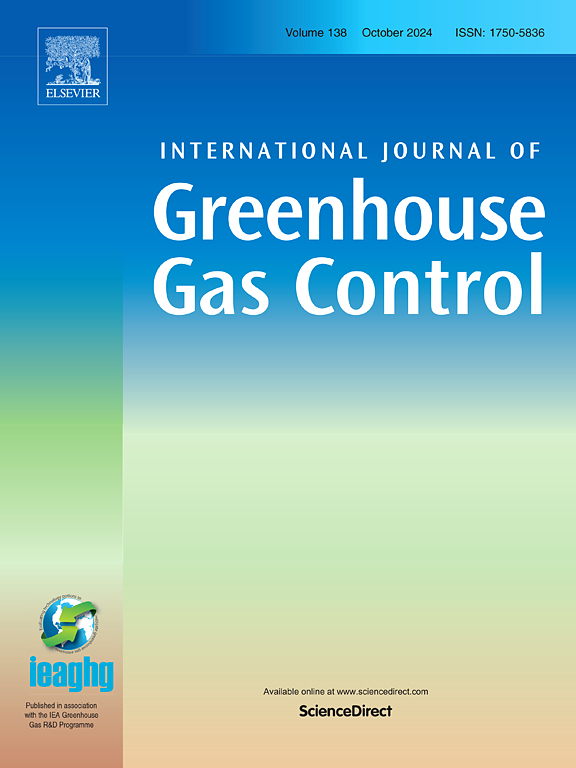Invertible Neural Networks based petrophysical inversion for carbon sequestration projects
IF 5.2
3区 工程技术
Q2 ENERGY & FUELS
International Journal of Greenhouse Gas Control
Pub Date : 2025-09-24
DOI:10.1016/j.ijggc.2025.104460
引用次数: 0
Abstract
Time-lapse seismic data has shown great promise in accurate monitoring of CO2 injection sites. There are many sources of uncertainty in derived rock porosity and CO2 saturation from time lapse seismic data. Variability in noise during data acquisition and noise inherent in seismic data can degrade signal quality and contribute to uncertainty in derived saturation estimates. The process of deriving saturation estimates involves solving an ill-posed, non-unique and highly non-linear seismic petrophysical inversion. Deep learning, particularly utilizing convolutional neural networks (CNNs), has demonstrated potential in addressing such complex and nonlinear seismic inversion challenges. Neural networks frequently find it challenging to offer reliable uncertainty estimates similar to those achieved with Markov Chain Monte Carlo (MCMC) techniques which are widely recognized for their statistical rigor in solving inverse problems. However, MCMC techniques are computationally expensive due to the need for repeated forward model evaluations to adequately sample the posterior distribution. To address this issue, we investigate the use of Invertible Neural Networks (INNs) to predict the full posterior distribution of porosity and CO2 saturation directly from time lapse data and capture the related uncertainty. INNs provide bijective mapping between data (input) and models (output) and uses a latent vector sampled from a Gaussian distribution to model the uncertainty. Our proposed approach is validated using two seismic vintages and well-logs from the Cranfield reservoir.
基于可逆神经网络的固碳项目岩石物理反演
延时地震数据在精确监测二氧化碳注入点方面显示出巨大的前景。从时移地震数据中导出的岩石孔隙度和CO2饱和度存在许多不确定性来源。数据采集过程中的噪声变异性和地震数据中固有的噪声会降低信号质量,并导致导出的饱和度估计的不确定性。导出饱和度估计的过程涉及求解不适定、非唯一和高度非线性的地震岩石物理反演。深度学习,特别是利用卷积神经网络(cnn),在解决这些复杂和非线性的地震反演挑战方面已经显示出潜力。神经网络经常发现提供可靠的不确定性估计具有挑战性,类似于用马尔可夫链蒙特卡罗(MCMC)技术实现的不确定性估计,MCMC技术因其在解决反问题方面的统计严谨性而得到广泛认可。然而,MCMC技术的计算成本很高,因为需要重复的正演模型评估来充分采样后验分布。为了解决这个问题,我们研究了使用可逆神经网络(INNs)直接从时间推移数据中预测孔隙度和二氧化碳饱和度的完整后验分布,并捕获相关的不确定性。INNs提供数据(输入)和模型(输出)之间的双向映射,并使用从高斯分布中采样的潜在向量来建模不确定性。我们提出的方法通过两个地震年份和Cranfield油藏的测井进行了验证。
本文章由计算机程序翻译,如有差异,请以英文原文为准。
求助全文
约1分钟内获得全文
求助全文
来源期刊
CiteScore
9.20
自引率
10.30%
发文量
199
审稿时长
4.8 months
期刊介绍:
The International Journal of Greenhouse Gas Control is a peer reviewed journal focusing on scientific and engineering developments in greenhouse gas control through capture and storage at large stationary emitters in the power sector and in other major resource, manufacturing and production industries. The Journal covers all greenhouse gas emissions within the power and industrial sectors, and comprises both technical and non-technical related literature in one volume. Original research, review and comments papers are included.

 求助内容:
求助内容: 应助结果提醒方式:
应助结果提醒方式:


